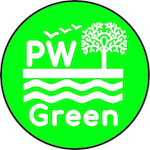Guggenheim Preserve

PENTAX Image
The Guggenheim Preserve, a 17-acre lot consisting of woodlands and a meadow, is located in Sands Point, on the western side of Middle Neck Road. Walking trails run along the perimeter of the property and through the center. For 350 years prior to the acquisition of the property by the School District in the early 1960’s, the land was used for farming.
The woods contain an estimated 400 trees including oak, maple, apple, horse chestnut, walnut, and locust. The New York Department of Environmental Conservation recognizes the forest as a bird breeding area. This area is also a popular resting and feeding location during bird migration. Species of birds spotted here include: hawks, falcons, nightingales, orioles, warblers, purple finches, woodpeckers, owls, and many other species.
The forest is also home to a colony of brown bats. In summer, bats can be observed at dusk, flying overhead. In winter these flying mammals hibernate in the trees here. In preparation for the winter hibernation, bats fatten up in late summer, feeding on insects such as mosquitoes. A single brown bat can eat 1200 insects in one hour. Unfortunately the bat population is decreasing due to loss of habitat causing an increase in the mosquito population.
The eastern cottontail rabbit is found here, too. They live in heavy brush, in the woods and the meadow. In winter their network of trails can be easily spotted in the snow. There have been occasional sightings of fox on the property, too.
The meadow contains many beautiful plants and wildflowers. Butterfly Milkweed, a protected species in NY State, can be found in full bloom here from July to September. Many species of butterflies, including the threatened Monarch Butterfly, can be spotted here in summer. This is the only known meadow of its kind in Nassau County.
An aquifer critical to the water needs of Port Washington exists under this land. The site is considered an aquifer recharge area where snow and rainwater seep through the uncontaminated soil eventually entering the aquifer as clean water. Development of this land, even for athletic fields, will hurt our aquifer.

